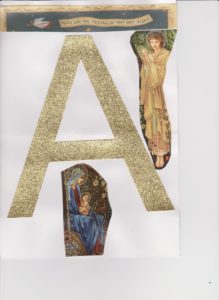
I found the letters from last year! Well, at least the ones that were completed. It was fun to look back on them and remember all of the people involved in decorating them. Here’s a gallery of the letters we have that I missed this year so far!
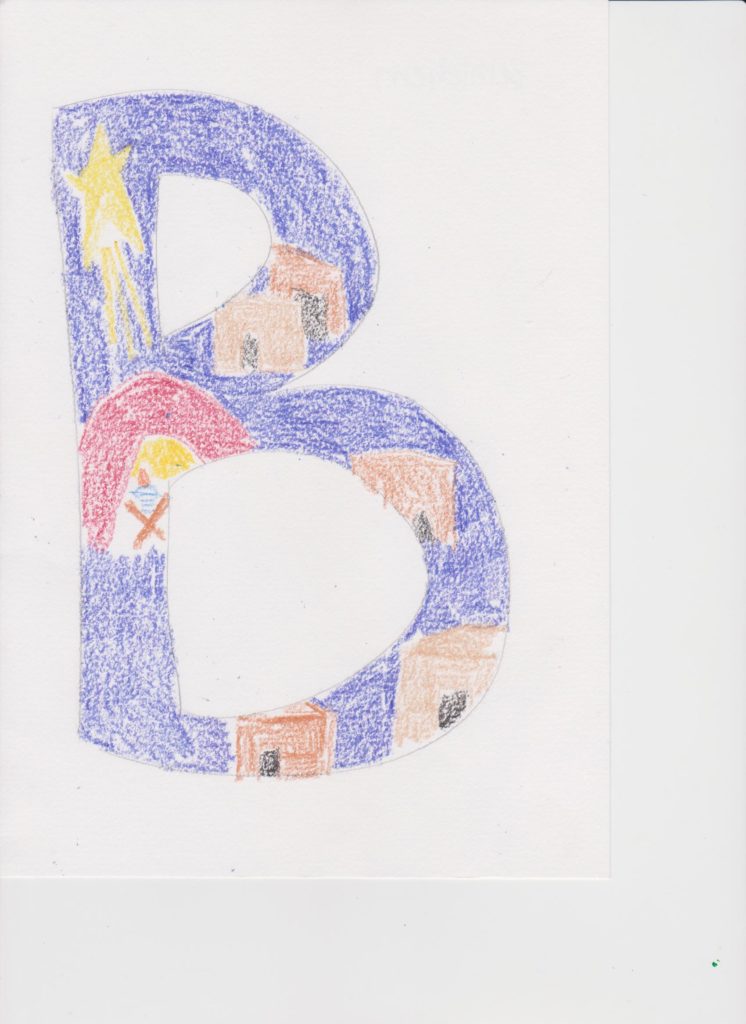
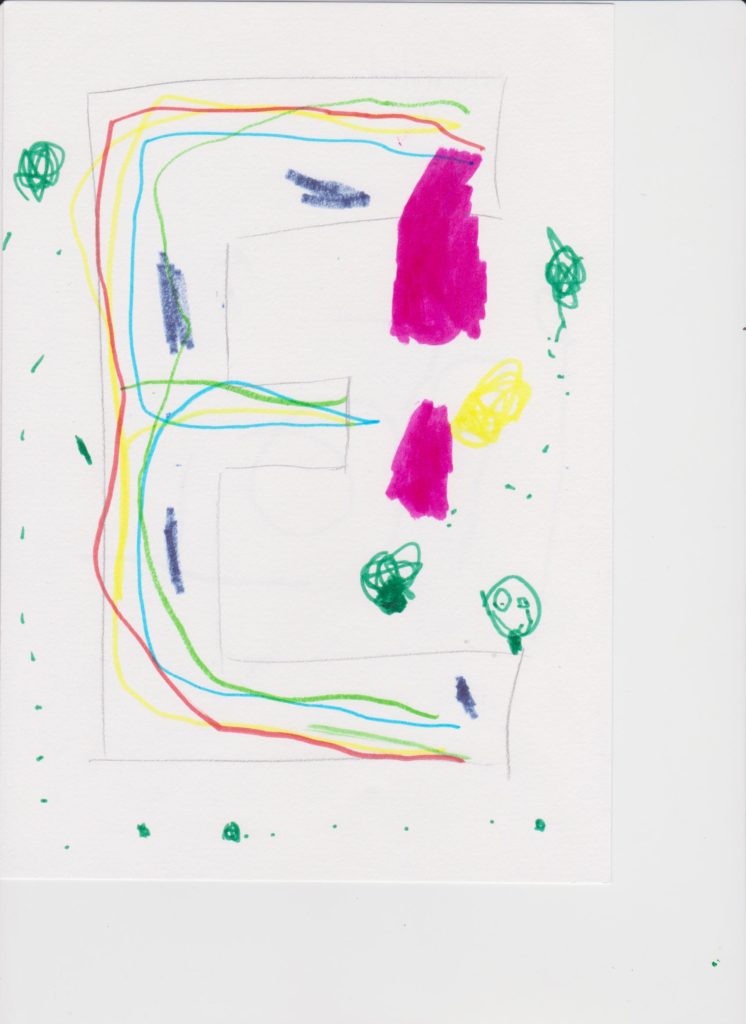
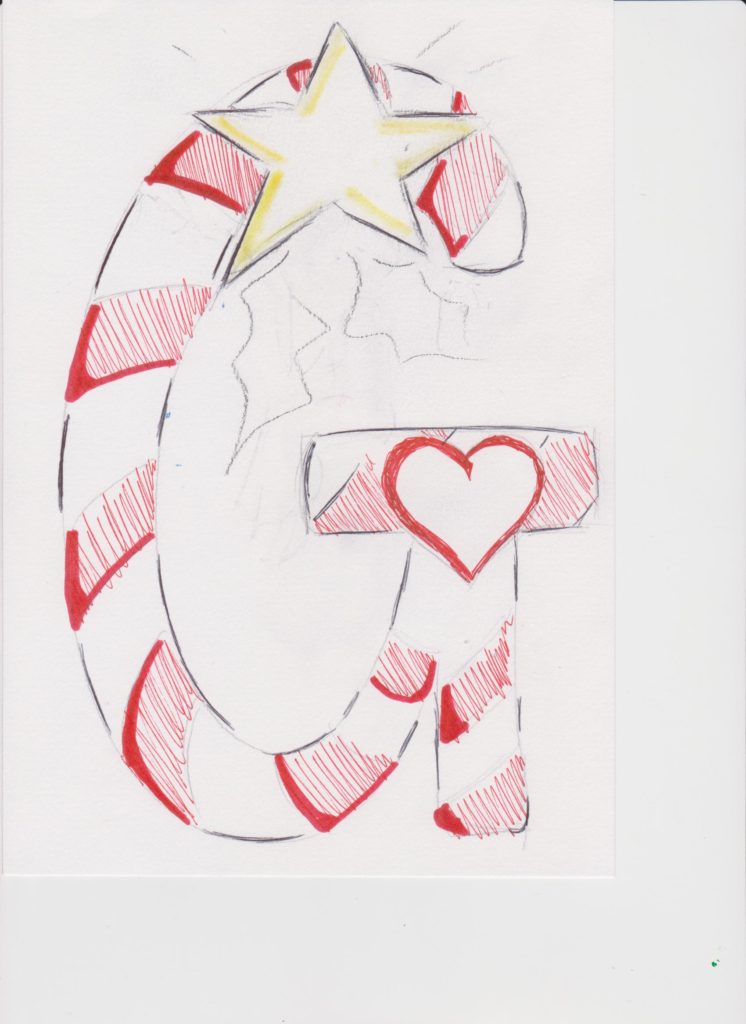
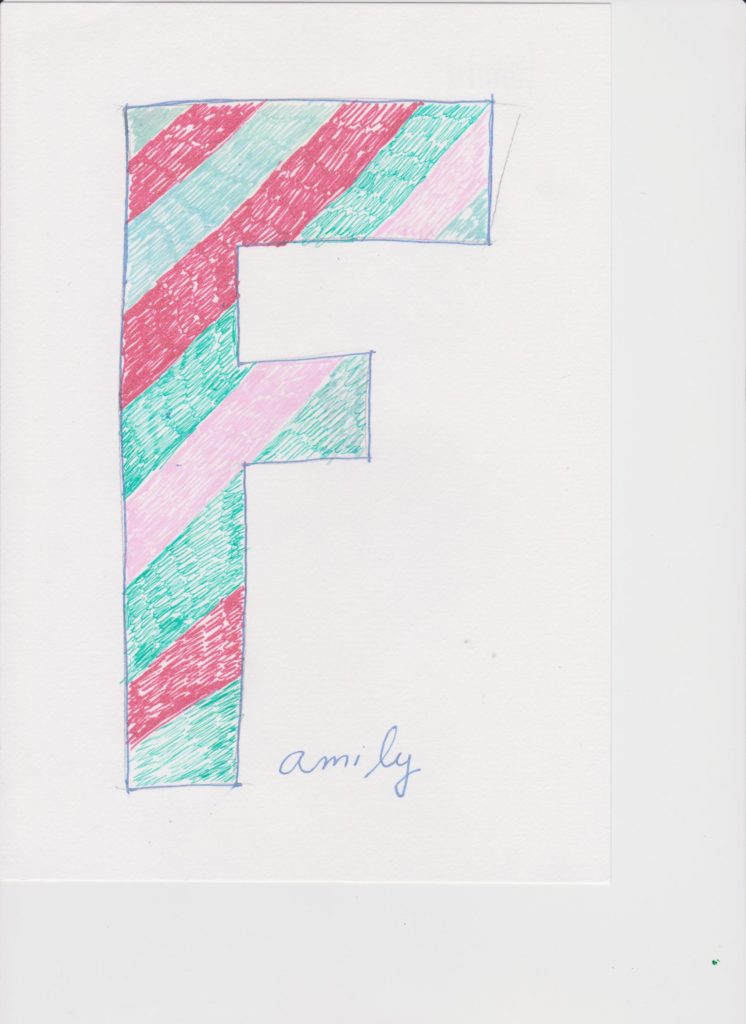

I found the letters from last year! Well, at least the ones that were completed. It was fun to look back on them and remember all of the people involved in decorating them. Here’s a gallery of the letters we have that I missed this year so far!




Most nights, before I start to read to my (now almost 10 year old) daughter, I ask her, “What are you grateful for?” I hope that this almost daily practice of expressing gratitude sets a solid foundation for her faith life. We don’t do a lot of the typical practices of “saying your prayers” at bedtime. She can probably recite the Lord’s Prayer along with others, but I don’t know if she knows it by heart. The book we always read at bedtime for her first 4 or 5 years was The Going to Bed Book by Sandra Boynton. Nothing particularly theological about it. The lullaby I sang was to the tune of “Jesus Loves Me” but I started singing it with the words “Mommy loves you, this you know, because Daddy tells you so” and “Daddy love you, this you know, because Mommy tells you so.” Eventually I added the words of the serenity prayer and then finally the words “Jesus loves you.”
It is this practice of gratitude that I hope will make a difference and stick with her. Her list tends to be pretty much the same night to night, beginning of course with the dog. But is also offers an opportunity to reflect on the day. Sometimes she surprises me with what she mentions. Recently, she has begun asking me what I am grateful for as well. This prayerful conversation is a way to remember God’s active presence in our lives. I invite you to try this practice during the Advent season and beyond.
What are you grateful for? Share your response in the comments below!
There’s plenty to be afraid of. That may be the understatement of the year at the end of 2020. Illness, violence, hatred, unrest, war, isolation. Nothing new really. Just coming at us all at once in a magnified way. There has always been plenty to be afraid of.
Mary had plenty to be afraid of. Unplanned pregnancy. Lack of shelter. Political unrest. Being chosen to bear God in flesh. She was probably afraid. But by sitting with the fear, taking a moment to be with the feelings, she was able to move through it. It’s not that there’s nothing to be afraid of. Rather, God With Us enables us to move through the fear.
The words of the angels : Fear not! can sound like a command, something that requires our efforts to overcome the fear. They can sound like a denial of reality. But maybe it’s more like “Fear need not have a grip on you.” Perhaps try just feeling the fear. Know God is with us. As you feel the fear with another, sometimes it melts away. We can share our fears with God incarnate – the body of Christ – the community that God forms. Then we might discover that the fear has dissipated. That we need not fear.
Emmanuel is most often translated from Hebrew into English as “God With Us.” Who is this God who is with us? Who is this God who does the unthinkable and becomes human so that we might share all of what it means? We say it is the God who saves. Saves us from what? Saves us how?
The God With Us comes down. This God is willing to experience the same suffering, confusion, despair and questions that plague humanity. God With Us does not save us by removing them, but by being with us in them. This the God of compassion. This is the One who we now are – the body of Christ. Jesus was the Christ. Now we are Christ’s body together, collectively, as community joined together by God With Us.
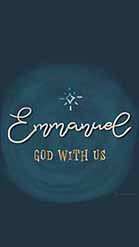
The council and the group that meets for Wednesday evening prayer service have been reading Compassion: A Reflection on the Christian Life. It’s been a little slow going because the authors introduce new ways of thinking about on common concepts in Christianity like community, servanthood and, well, compassion. Displacement, however, is not exactly a common concept in Christianity. Yet, after some unpacking, it’s clear that it is a necessary concept of Christianity.
Displacement, understood as a “shift from the ordinary or proper place,” is indeed what happens to us when we become part of the body of Christ. Some might equate church with what is ordinary and proper. But the gospel does something different to us. When we recognize the invitation to displacement, we no longer have the need to cling to the expected, routine, often comfortable spaces. Displacement frees us from the illusion of normal. Displacement allows us to see our own brokenness. Displacement makes space for grace. Jesus Christ is God displaced in humanity. The Christian Life is life as the body of Christ!

I have still not been successful finding the letters we decorated last year. Luckily I have my own personal artist at home!
I’ve also not been successful in finding our advent wreath frame. I remember packing away the Christmas decorations last year and thinking I’d be clever and put the advent wreath somewhere I could find it easily this year. No such luck!
For the past several years we have gotten one of the Lego advent calendars. Not so this year.
I’d like to say that COVID is the reason for not having my act together for Advent, but that would just be an excuse. Nor would it explain why this happens every year! I loathe the earlier and earlier Christmas decorations showing up all over. I’ve even grown resentful about #GivingTuesday as just another way to the get on the bandwagon of Black Friday, Small Business Saturday and Cyber Monday.
This is why I’m grateful for the Advent season. It gives me time to prepare. It helps remind me of all the preparing God is doing. Just one lone candle reminds me this week.
If you are following along with A Video Advent here is the link again!
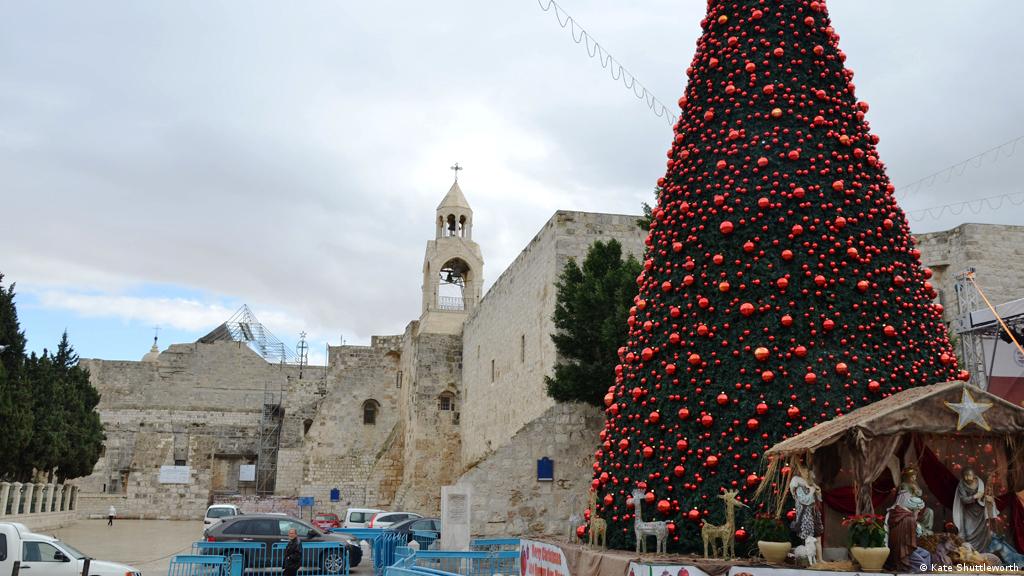
While many are familiar with Bethlehem as the little town in the story of Jesus’ birth, not as many may think of the present day city of Bethlehem. A group of young adults in the ELCA (Evangelical Lutheran Church in America) and the ELCJHL (Evangelical Lutheran Church in Jordan and the Holy Land) thought to change this. They put together a series called Advent Pilgrimage in Palestine involving weekly videos and blog posts using the hashtag #AdventInPalestine. In this first week of Advent, we hear from The Rev. Ashraf Tannous, pastor of the Evangelical Lutheran Church of the Reformation in Beit Jala, Palestine – outside Bethlehem. Rev. Tannous talks about what the first Advent candle – hope – means to him as a Christian and as a Palestinian.
Over the four weeks of Advent, we will be led on a virtual pilgrimage through story, education and theological reflection. You can register here to receive resources, including weekly videos and blog posts via email. Or search for #adventinpalestine in your favorite social media app!
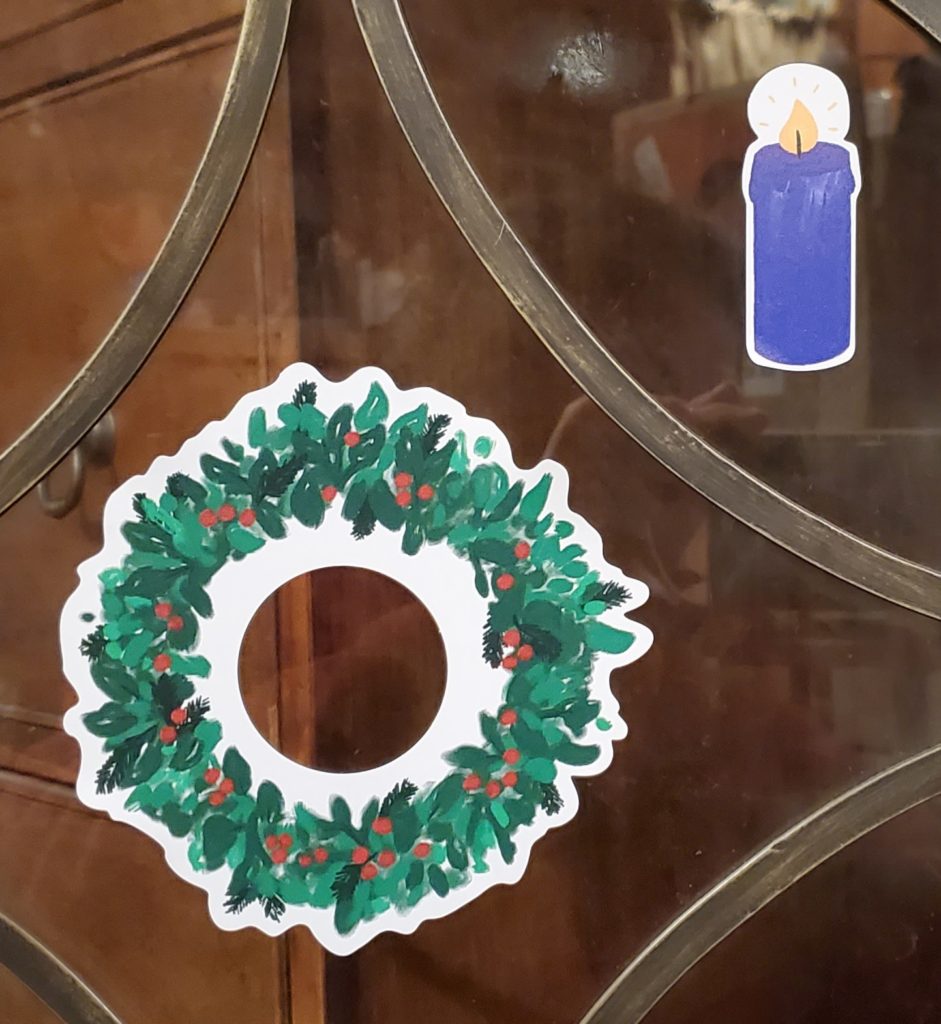
This year we will be journeying through the alphabet as we move our way through Advent towards the Day of Christmas. Last Christmas Day a small group of us gathered for an intimate worship that included getting crafty! I had each letter of the alphabet plainly sketched out on a sheet of paper waiting to be decorated. The thought I had was to hang up these creations throughout the season of Advent. 26 letters in the English alphabet. 26 days from Advent 1 through Christmas Eve this year! Little did we know back then that things hung up in the church would not be seen by many people…
So for the letters I can find, I’ll include an image here. Otherwise there may be some other image that speaks to the word of the day. May these daily reflections through the season of Advent be a gift to you. I’ll also be including a link to a video Advent project of which I was blessed to be a part. These are 5 – 7 minute offerings (longer on Wednesdays) shared with the wider church and those beyond the church. Many thanks go to The Rev. John Michael Longworth, OEF, of Rutland, Vermont for curating this collection and all who contributed.
Stone Soup Kitchen is feeding over 25 families (up to 45 people) at the Living Waters Church in Ayer. They are in need of both monetary and food donations. Donations can be made to “Stone Soup Kitchen”, 41 Littleton Rd, Ayer MA 01432. Food donation can be dropped off Wed – Fri, between 10 am and noon.
Food items most needed to stock their food pantry and help provide hot meals are:
spaghetti sauce
pasta (spaghetti and other shapes)
boxes of cereal
boxes of oatmeal packets
canned tuna (or the pre-mixed packets)
canned chicken (or the pre-mixed packets)
canned soups (no fish or shellfish soups please)
canned carrots, green beans, corn, peas
fruit cups
corn beef hash
baked beans
canned pasta (spaghettios, beef ravioli, etc)
canned chili (like Hormel)
boxed mac + cheese
envelopes or small boxes of instant potatoes, any flavor
small boxes or foil packs of rice, rice pilaf, rice-a-roni, etc
instant ramen noodles (no shrimp please)
2 lb bags of rice
small jars of peanut butter
small jars of jelly
box cartons of shelf stable whole milk (not evaporated)
pudding cups
granola bars
peanut butter or cheese cracker packs
juice boxes
toilet paper
sliced bread
The real risk of Forgiveness by Sarah Montana